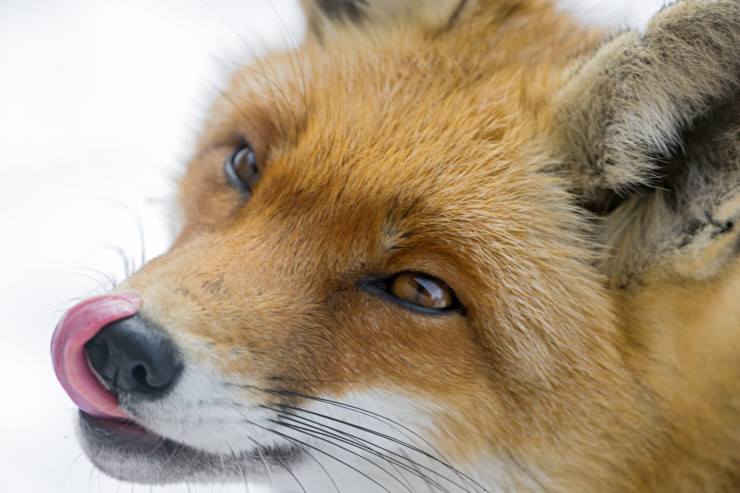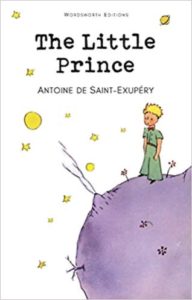The Little Prince will shine upon children with a sidewise gleam. It will strike them in some place that is not the mind and glow there until the time comes for them to comprehend it.”
— P.L. Travers, author of the Mary Poppins series, in a review for the New York Herald Tribune
It takes a person like P.L. Travers, who created a nanny who is and is not of this world, to grasp the significance of The Little Prince. She is not concerned with what the author, Antoine de Saint-Exupéry, deemed “matters of consequence,” like how many copies of The Little Prince have been sold (millions and millions), how many languages it has been translated into (361), or how many adaptations it has undergone (not millions, but give it time). Although Travers was an adult when she wrote this review of The Little Prince, she was not that thing which Saint-Exupéry condemned: a “grown-up.”
He dedicated this story not to his friend Leon Wreth but “To Leon Wreth when he was a little boy.” It is only as a little child that one can read this story rightly.
It’s been called a fable, for it has wisdom. It’s been called a fairytale, although it has no fairies — only a rose, three volcanoes, a fox, a snake, a little prince, and an aviator.
Saint-Exupéry was an aviator himself. He flew for the French mail service, the French air force, and the Free French resistance force. His plane disappeared in 1944, a year after publication of this book. But before that, he crashed in the Arabian Desert in 1935 and was lost for a week, roughly the same amount of time that the events in the book encompass. I like to think it was in that desert he first met the little prince. Saint-Exupéry wrote the book and did the watercolors while in New York, and it was published in 1943.
There is more than one edition of this story with illustrations on every page, including a family storybook. But I prefer the original, with scattered drawings and paintings across its ninety-two pages. My favorite is on the last page. It has no color, just one star and two lines that indicate sand. Saint-Exupéry writes of this illustration, “This is, to me, the loveliest and saddest landscape in the world.”
The Little Prince is a sad story. I think it’s one reason it endures. “It is such a secret place, the land of tears,” the aviator says. Children need such a place. Surely the aviator did, when he was unable to fix his plane; and the little prince did as well, especially on the day of the forty-four sunsets.
There is no right age to read this story, only a wrong age — the age that must count, rule, drink, and raise a thousand roses yet not know a single one.
Unlike many enduring stories, this one does not begin with “Once upon a time,” but rather “Once when I was six years old.” It begins when the aviator is a little boy who draws things grownups do not understand. Just before he introduces us to the little prince, he says the encounter happened six years ago. Six and six. There are other such parallels in the story. Just as the Sahara Desert is not lush, neither is Asteroid B-612, the little prince’s home. There is a snake both at the beginning of the story and at the end.
Like any classic book, this one bears rereading over a lifetime. Italo Calvino wrote a list of reasons why to read classics, and number 6 applies: “6) A classic is a book that has never finished saying what it has to say.” I found that to be true as I read The Little Prince again, for the umpteenth time, one warm afternoon.
While preparing this post I found lesson plans for this book. I found top 10 lists of lessons learned from it. I suspect the little prince might say, as he does in the story, “What a queer idea!” Because where oh where does a person start to catalogue this slim book’s mighty wisdom? With the people on the planets the little prince visits? With the pernicious baobabs on his own small world? With the fox he meets on this Earth and tames?
If you look directly at the story, it will blind you, like sun on desert sand. You must catch its “sideways gleam.”
The most famous line from the book is said by the fox to the little prince: “It is only with the heart that one can see rightly; what is essential is invisible to the eye.” Perhaps you’ve seen the quote on a poster or a meme or a throw pillow. It’s the key to the tale, but it’s best not to encounter it head-on.
How do we see with the heart?
I like to travel back to the beginning of the story, when the aviator meets the little prince, who asks him to draw a sheep. After three failed attempts, the aviator draws a box with airholes.
‘This is only his box. The sheep you asked for is inside.’
I was very surprised to see a light break over the face of my young judge:
‘That is exactly the way I wanted it!’”
The sheep is inside the box, invisible. But with the heart, the little prince can see it rightly. So can the aviator. So can we.
Just as the little prince could see beauty in stars, because one of them held his flower, and just as he could also see loveliness in a desert, because somewhere it hid a well, so I too am learning to see what is unseeable. Last Sunday I found a clump of bluebonnets — the first of the year — and in seeing them, I saw someone, a person long gone. The bluebonnets gave her back to me.
I’m not a grownup yet.
Photo by Tambako The Jaguar, Creative Commons, via Flickr. Post by Megan Willome.
Browse more children’s books
“Megan Willome’s The Joy of Poetry is not a long book, but it took me longer to read than I expected, because I kept stopping to savor poems and passages, to make note of books mentioned, and to compare Willome’s journey into poetry to my own. The book is many things. An unpretentious, funny, and poignant memoir. A defense of poetry, a response to literature that has touched her life, and a manual on how to write poetry. It’s also the story of a daughter who loses her mother to cancer. The author links these things into a narrative much like that of a novel. I loved this book. As soon as I finished, I began reading it again.”
—David Lee Garrison, author of Playing Bach in the D. C. Metro
- Perspective: The Two, The Only: Calvin and Hobbes - December 16, 2022
- Children’s Book Club: A Very Haunted Christmas - December 9, 2022
- By Heart: ‘The night is darkening round me’ by Emily Brontë - December 2, 2022



L.L. Barkat says
Though there is much to love in this discussion of The Little Prince, I was reminded of how dearly I believe that children need secret places. A book can be such a place.
Bethany R. says
Yes.
Bethany R. says
Thank you for writing and sharing this thoughtful post about one of my favorite authors and books of all time. Such a poetic life and story. Even a poetic name.
(Actually, one funny thing I occasionally do, just for the Simple Pleasure of it, is listen to the French pronunciation of Antoine de Saint-Exupéry. Hearing it’s like receiving a little gift.)
I’m glad you saw your Bluebonnets again. 🙂
Megan Willome says
Thank you, Bethany. I’ve heard that this book is taught in French classes, so students can practice their reading and pronunciation. That would be a whole ‘nother level of beauty, I’m sure.
Megan Willome says
A very good place, I think. You can hide in plain sight.
L.L. Barkat says
Oooo. I like that. 🙂
Will Willingham says
“It’s best not to encounter it head-on.”
This is such an offering of wisdom, for so very, very many things.
Megan Willome says
And yet, that’s the tactic we often pursue, isn’t it?
Wisdom indeed.